How South Georgia saved its ecosystems from the brink of extinction
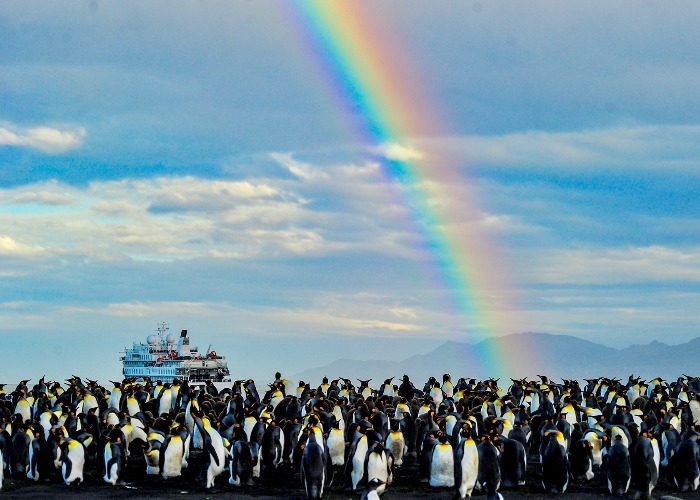
Crowded colonies of king penguins, row upon row of sleeping seals and seabird nests almost stacked on top of one other: Mark Stratton discovers how the Subantarctic island of South Georgia went from being a once-exploited whaling hub to a wildlife haven reborn...
A pea-souper mist squats over St. Andrews Bay where the shoreline thrashes with king penguins, their golden heads dashing colour into a monochrome morning of coarse black sands and glaciers. Upon entering the water, their white bibs are streaked red from the krill they’ve been feeding their chicks, while those emerging from the ocean are pristine clean.
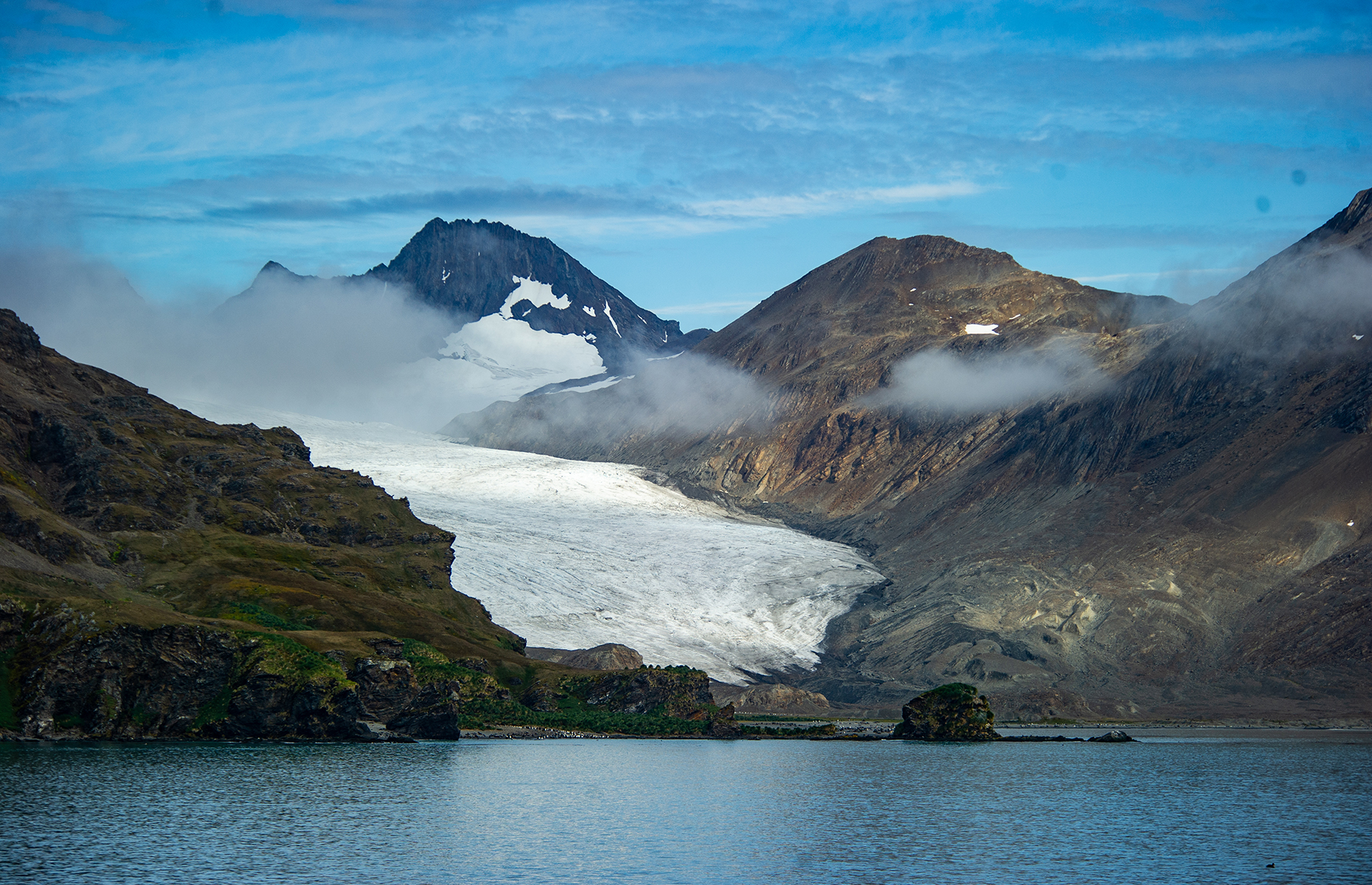 Mark Stratton
Mark Stratton
The mist slowly lifts. Avoiding wriggling fur seal pups, I walk inland to a tussock-grass knoll to witness a scene that seems to contradict a now-familiar narrative of biodiversity meltdown. Before me are 350,000 breeding pairs of king penguins, stretching as far as the eye can see.
Every beach, lagoon and glaciated mountainside is crowded with them, including creches of chicks with fluffy brown coats, who elevate the total penguin count into the millions. All I can do is stare in disbelief and wonder – how did South Georgia buck the trend of destruction of our natural world?
Road to recovery
After 150 years of human exploitation which brought much of the local wildlife to extirpation, South Georgia is an ecosystem in recovery. Besides gargantuan colonies of penguins, this Subantarctic British protectorate yields five-and-a-half million Antarctic fur seals (95% of the global population), plus blizzards of albatross and prodigious quantities of elephant seals.
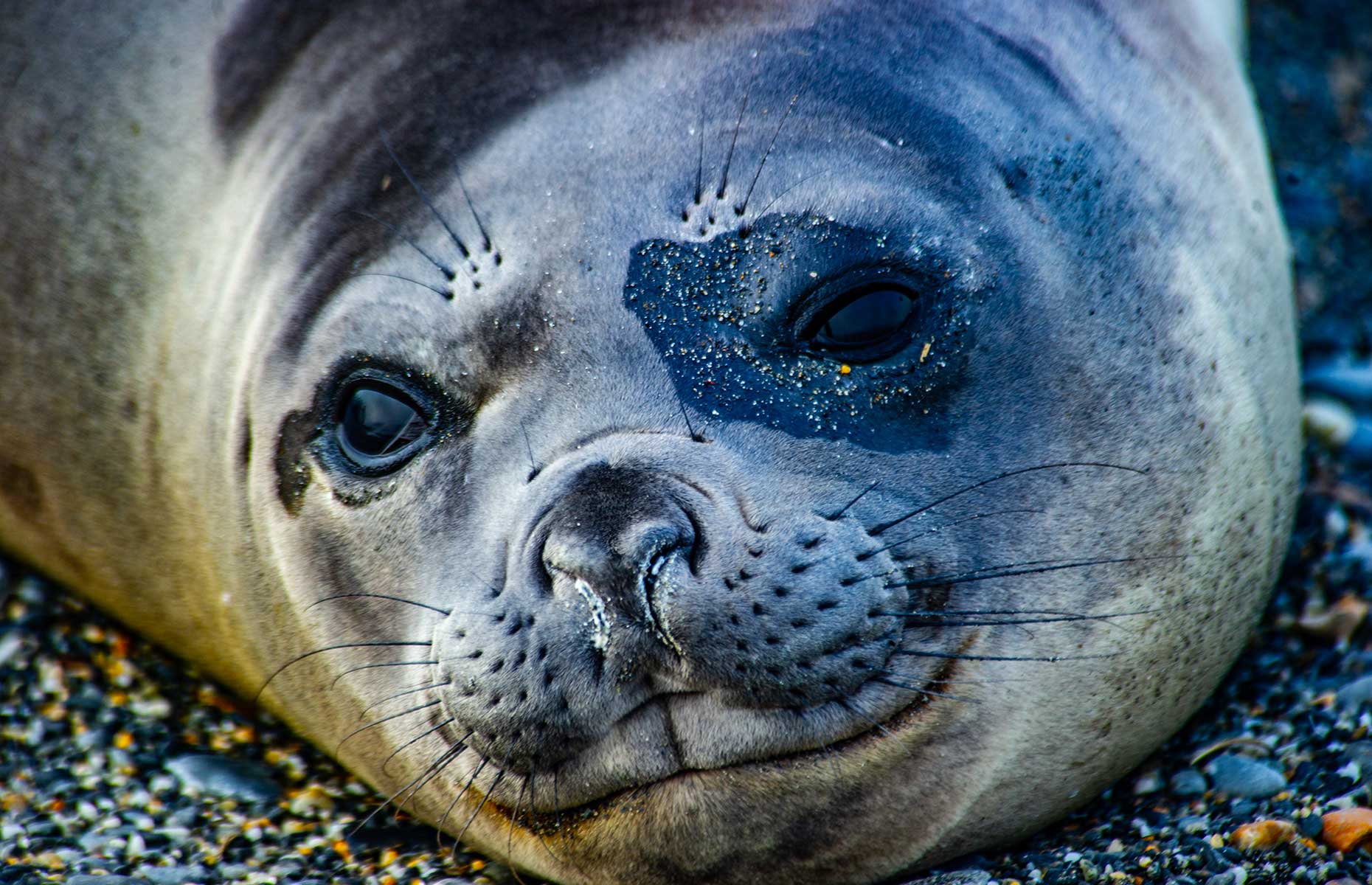 Mark Stratton
Mark Stratton
Located three days’ sail southeast of Ushuaia in Argentina, South Georgia is probably best known for the greatest survival story of all time. In 1916, polar explorer Sir Ernest Shackleton arrived on the island after an arduous 800-mile (1,300km) sea crossing in a flimsy lifeboat from Antarctica’s Elephant Island, just months after his ship, the Endurance, was crushed by ice and sank in the Weddell Sea.
Yet the South Georgia he saw is a different place today. Besides glaciers now being in retreat, the island's wildlife was being decimated by the sealing and whaling industries during his time.
Lodged in scalloped bays between dark mountainous cliffs and glaciers, old decaying whaling stations are testimony to those days of cruel carnage. I visit one at Grytviken (where Shackleton is buried) founded by Norwegian whaler, C.A. Larsen, in 1904.
It’s a place of ghosts. Rusting whaling ships still have harpoon guns mounted and the chains that hauled ashore slain blue, humpback and fin whales lie where they were last used. Blubber oil collection tanks are a reminder of a capricious era that saw 175,000 whales processed in Grytviken alone. The mammals were eventually hunted to near-disappearance. South Georgia’s whaling stations became economically unviable and Grytviken closed in 1965.
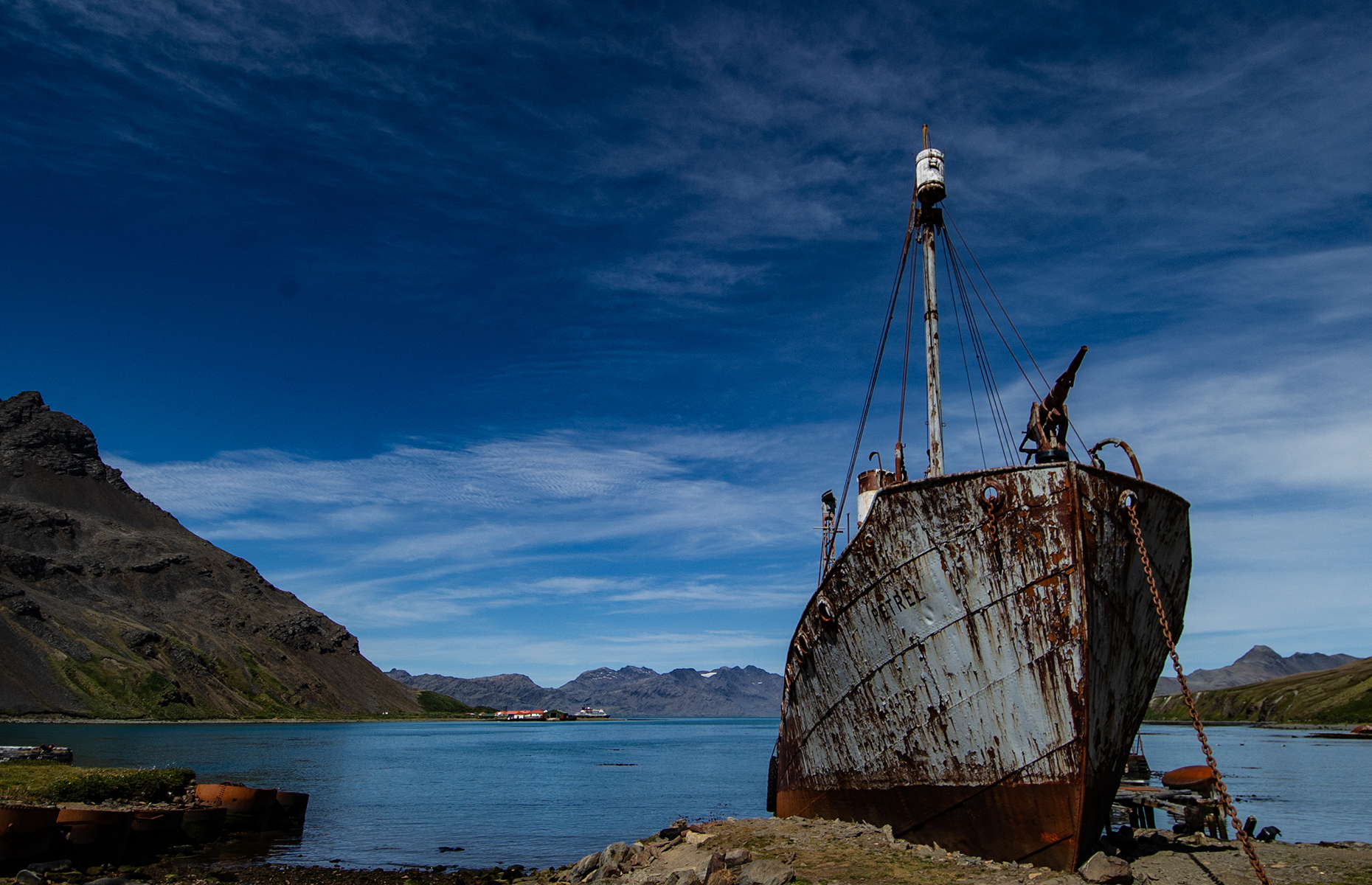 Mark Stratton
Mark Stratton
READ MORE: The world's most incredible shipwrecks
Life support
The recovery started when humans finally abandoned their commercial interest in the South Atlantic island and its waters. Nowadays, only a smattering of staff from the British Antarctic Survey plus South Georgia’s administration officials are here for research and marine fisheries protection.
“The recovery began with the creation of one of the world’s largest marine protected areas and positive conservation work,” says Dr Annette Bombosch, our scientific coordinator onboard Island Sky, the vessel on which I spend 17 days exploring Antarctica and the Subantarctic region.
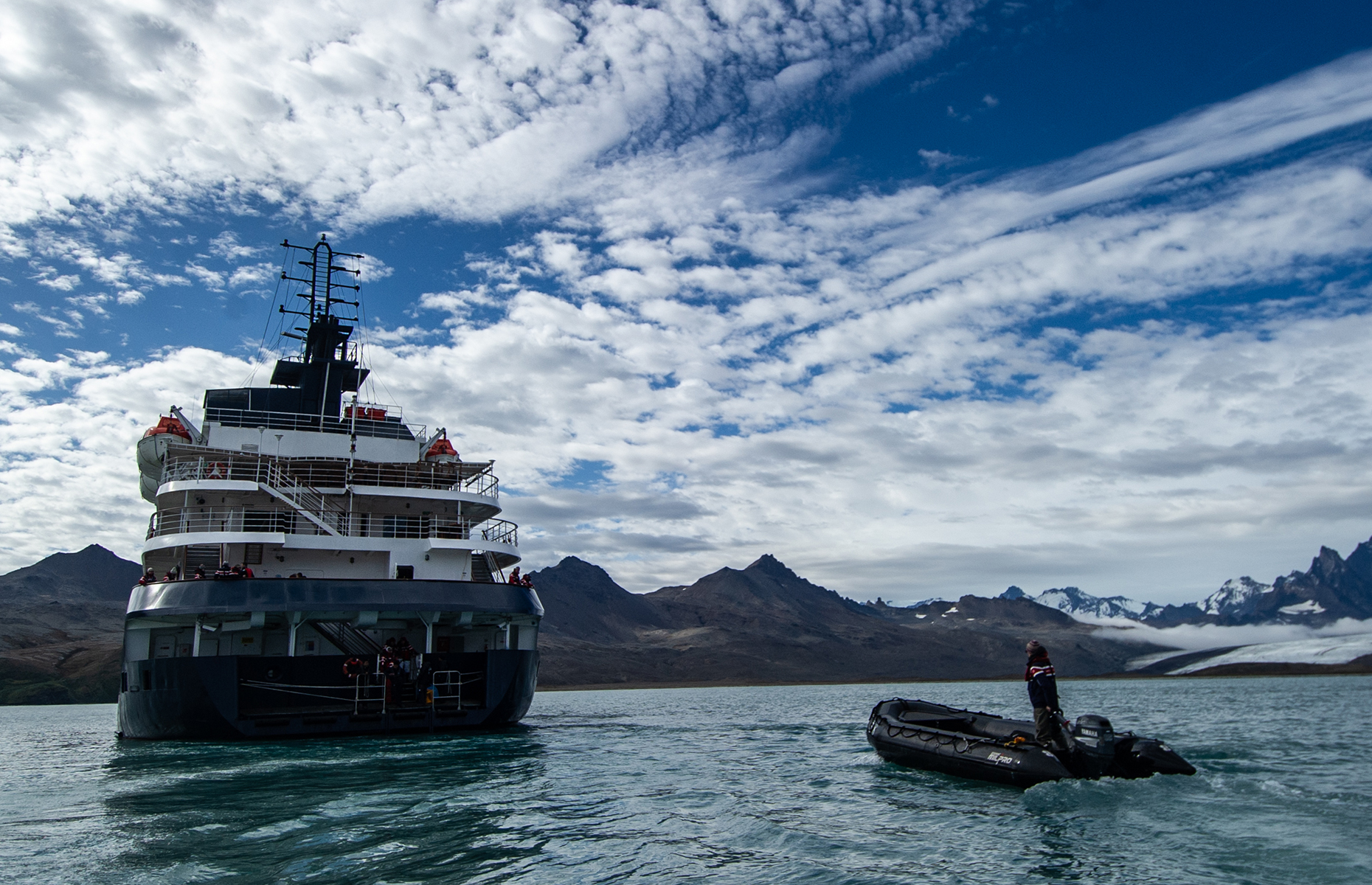 Mark Stratton
Mark Stratton
The South Georgia and the South Sandwich Islands Marine Protected Area (MPA) was established in 2012 by the government of South Georgia. It spans 479,000 square miles (1.2m sq km) of some of the most fertile sea on Earth and enforces tight fishing quotas.
One-quarter of the MPA is a no-take zone, which means no fishing at all. In other areas, no trawling is allowed, while fishing is limited to only four months of the year – in winter, so it falls outside of major bird nesting seasons. Oil and gas exploration is forbidden and fishing of the krill so vital to the diet of baleen whales and penguins has a short, limited season.
With high densities of fish and krill back in the food chain as a result, penguin numbers have skyrocketed – not least the king penguins who feed off small fish. These, in turn, consume krill. A resurgence of whales feeding in these rich waters has also taken place.
In King Haakon Bay, where Shackleton first made land in May 1916, I watch several humpback whales lunging to feed in an aquamarine sea swelling with glacial meltwater. From almost being hunted to extinction, humpbacks have made a spectacular recovery, as has the largest mammal ever known – the blue whale. Bombosch says that this year, 55 blues were spotted on a single day’s survey. I’d also read (with some envy) that another passenger cruise ship had seen a mega-pod of 1,000 fin whales. For context, some 725,000 fin whales had been hunted out in the Southern Hemisphere during the 20th century.
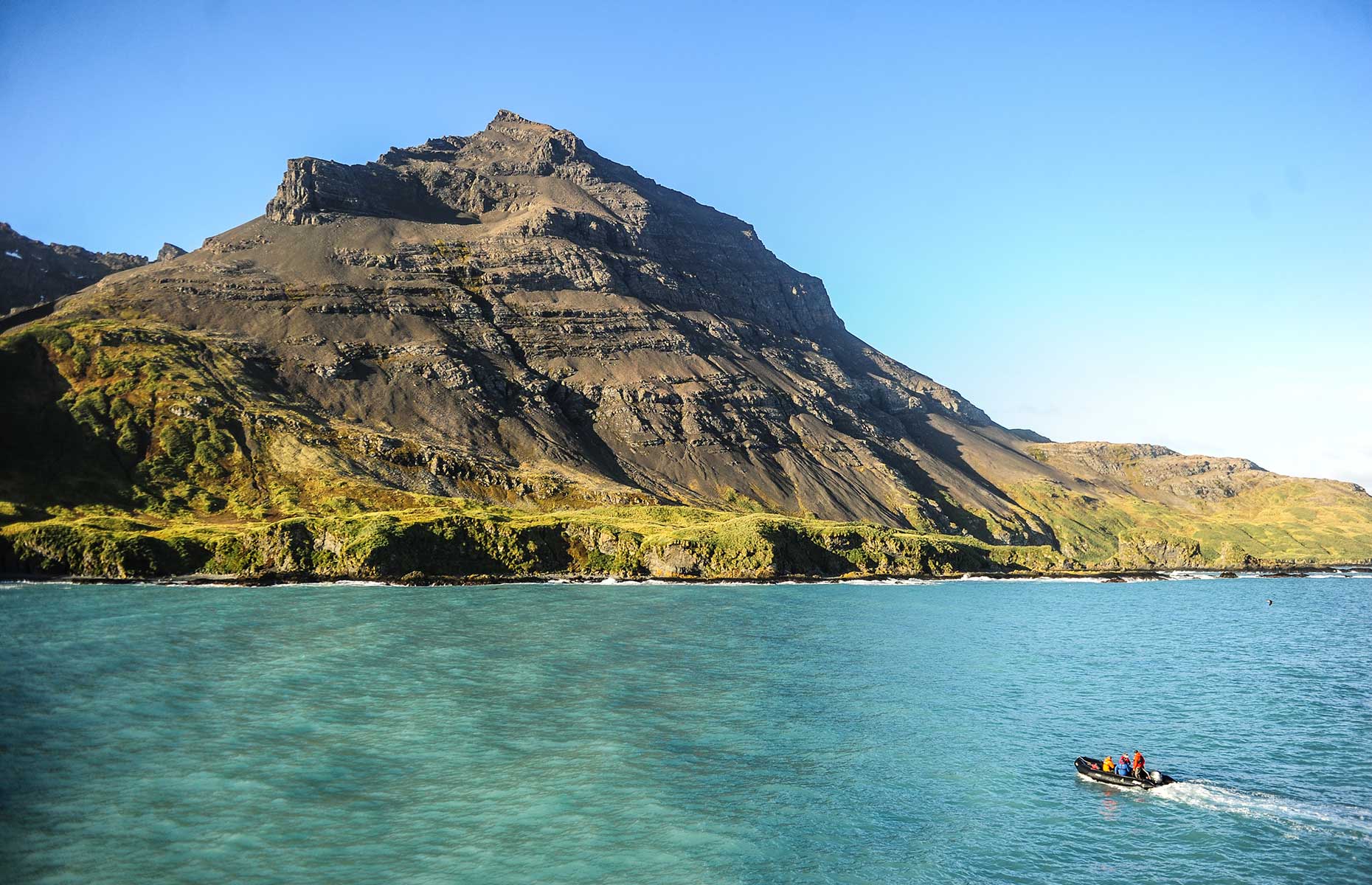 Mark Stratton
Mark Stratton
Arguably, fur seals represent the greatest recovery case study. In 1825, sealer James Weddell claimed over one million seal pelts had been collected. But the end of sealing and better protection of the seals’ food source has seen their population explode. At times, I find it hard to move around beaches chock-a-block with curious doe-eyed seal pups.
Our Zodiac guide, taking us to shore in a rubber dinghy one afternoon, says the young seals are beginning to damage the tussock grass as numbers reach unprecedented levels. “Perhaps the government should start culling them,” suggests one of my fellow passengers. But they’re wrong. Non-intervention means fur seals will reach their own carrying capacity and nature will soon re-establish a sustainable figure, either via food pressures or disease.
Success stories
However, a helping human hand has enabled two of South Georgia’s most iconic creatures to recover: albatrosses gliding off the ship’s stern are a familiar sight. Off the coast are significant nesting sites of black-browed and wanderer albatrosses. They build elevated tubular nests from mud and raise their chicks on these plinths. During a Zodiac cruise in Elsehul Bay, several black-browed albatrosses swoop overhead, so close I can feel their wings’ downdraft.
“The MPA’s strict rules have halted albatross decline,” claims Bombosch. “Before, they used to get entangled in fishing nets but ending trawler netting and banning fishing during their breeding season has ensured bycatch of them in South Georgia’s waters has been reduced to zero”.
There’s also a melodic song heard across the island’s coast – that of a petite endemic bird called the South Georgia pipit. I see several of these pretty little birds, with their striped chests and off-yellow colouring, foraging amid the kelp washed up onshore.
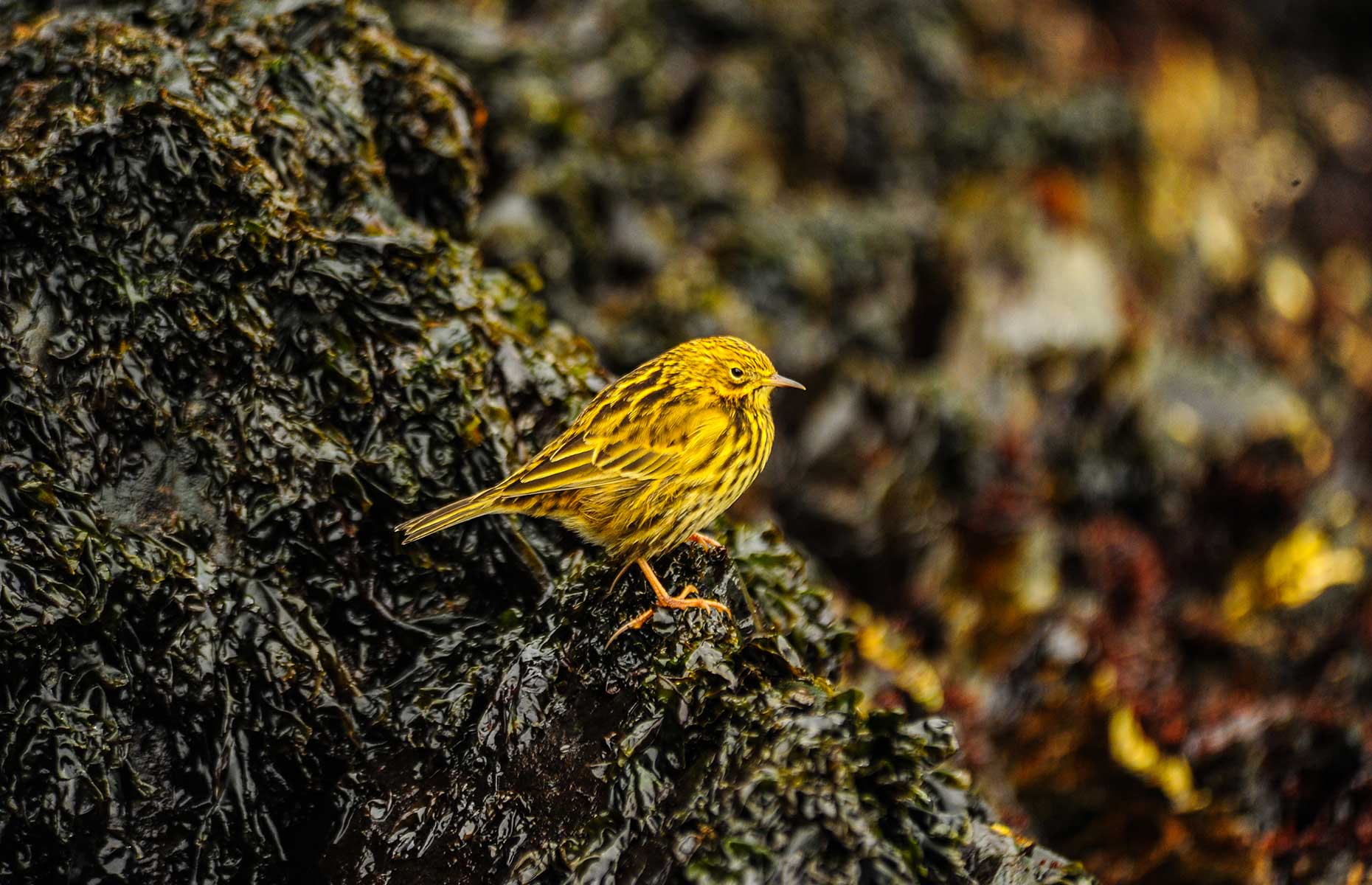 Mark Stratton
Mark Stratton
READ MORE: Arctic v Antarctic cruise – which is right for you?
“Their comeback has been a miracle... they were reduced to just a few nesting pairs on little offshore islets, their chicks and eggs eaten by rats”. But Bombosch says a rat eradication program begun in 2011 succeeded in eliminating all rodents – introduced to the island by several centuries of mariners – by 2017.
“I’d been coming here for 12 years and never seen a pipit,” says our voyage’s expedition leader, Sarah Scriver. “The year after the rats were gone the pipit population exploded. It was miraculous.”
It’s that word again – "miracle". Fitting, as South Georgia has shown what could be achieved in other faltering ecosystems across the globe, if humankind simply steps away and lets nature do its thing.
Discover the World and Antarctica expedition experts Polar Latitudes both offer Antarctic Peninsula, Falklands and South cruise itineraries from £17,025 ($20,660) per person.
READ MORE: Good news stories about our planet to warm your heart
Main image: Mark Stratton
Comments
Be the first to comment
Do you want to comment on this article? You need to be signed in for this feature